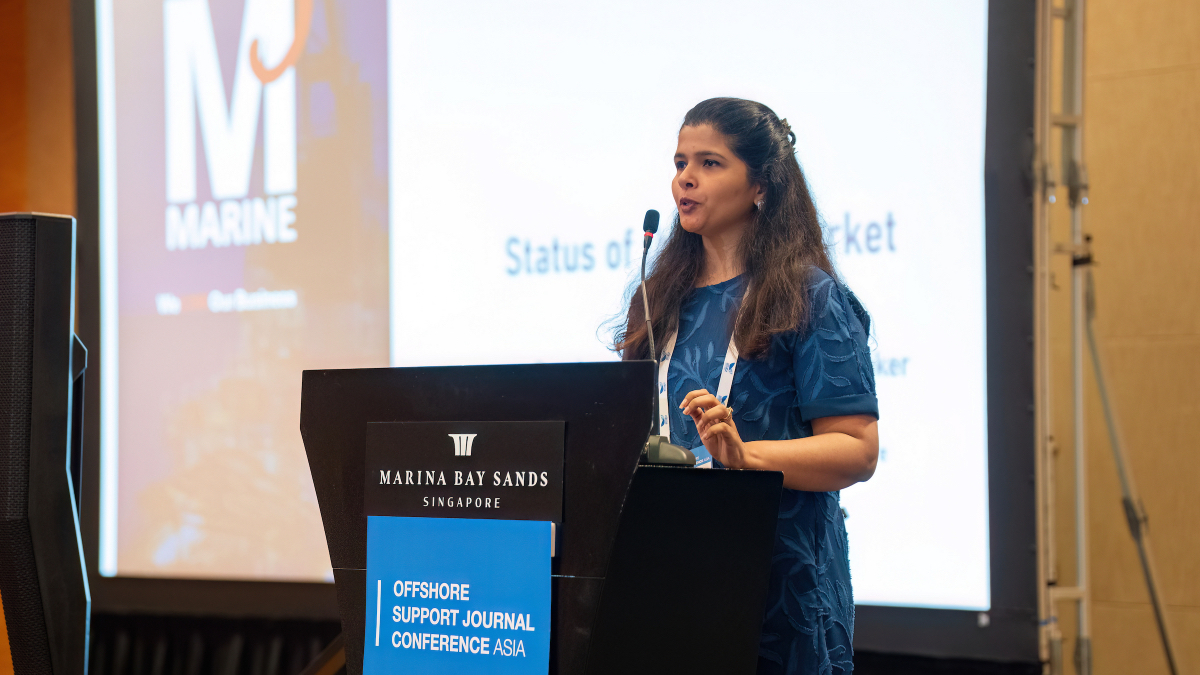Singapore’s leading shipbroker M3 Marine Offshore Brokers has analyzed current offshore support vessel (OSV) orders, focusing on speculative newbuilds in the market.

The shipbroker noted that among the 209 offshore support vessels (OSVs) ordered globally, the majority were speculative orders, particularly prominent in the platform supply vessel (PSV) and anchor handling tug supply vessel (AHTS) segments.
Mili Verma, a broker at M3 Marine Offshore Brokers specializing in both secondhand and newbuild vessels, stated: “Over 50% (and possibly more) of these vessels were speculatively built, with the PSV and AHTS segments being particularly affected.”
To assess whether there is a mismatch between current market demand and this batch of planned new shipping capacity, Verma compared the types and sizes of vessels currently under construction at shipyards with the age structure of the global fleet. When an offshore support vessel (OSV) reaches 15 years of age or older, international oil giants and national oil companies typically consider it to be nearing the end of its service life.
At the Offshore Support Journal Conference, Asia held in Singapore, Verma shared data indicating that orders for large PSVs (over 4,000 deadweight tons with a net deck area of 1,000 square meters) may be oversupplied, while construction of smaller PSVs remains insufficient.
She pointed out that most speculative newbuildings currently are large PSVs. Among the 580 vessels of this type currently in service globally, 25% are approximately 15 years old, with only 40 vessels reaching 20 years or older. In contrast, for small PSVs, 70% of the 210 vessels in active service worldwide have reached 15 years or older. Currently, speculative new orders for this category of small PSVs stand at just 4 vessels.
The majority of AHTS newbuilding orders currently fall within the 80-90 ton bollard pull class. Of the 600 AHTS vessels currently in service in the 6,000-8,000 horsepower class, 55% are over 15 years old, with 170 of these vessels over 20 years old. Verma explained, “While 5,000-6,000 horsepower AHTS, typically with a bollard pull of 60-70 tons, represent a relatively separate segment, we believe the DP-2 newbuildings currently under construction could, to some extent, replace these smaller AHTS vessels.”
Based on the above analysis, Verma said: “Taking all these factors into account, we are confident that speculatively built AHTSs will have a better chance of finding buyers or securing long-term charters than PSV vessels.”
She also expressed concerns about the ordering and equipment configuration of some new vessels: “Some new entrants have chosen equipment or manufacturers with limited international operational recognition, and some have even chosen to partner with shipyards lacking experience in offshore vessel construction.” Furthermore, she warned against the risks of early termination clauses in long-term leases. While new vessel tenders may offer long-term leases with ample lead time, if the contract includes an early termination clause with a “30-day effective” date, it essentially becomes a short-term contract of only 30 days.
Overall, the current orderbook represents only a small proportion of the global OSV fleet of 4,500 vessels. However, Verma said that for shipowners looking to build new vessels, high capital costs and limited access to financing remain the “primary challenge” for shipowners financing newbuildings.
Analyzing the dynamics of the Southeast Asian market, she noted that the average utilization rate for PSVs and AHTS vessels remains healthy at 88%, but daily charter rates still have room for improvement. While current charter prices in Southeast Asia are insufficient to support newbuilding projects, she noted that due to local requirements, newbuilding orders will be placed by regional operators in the coming months, particularly in the AHTS and workboat sectors.
Some shipowners are signing long-term charters for vessels approaching 15 years of age, while newer vessels are being deployed to high-rent regions like the Middle East to secure better rates. Daily charter rates for large PSVs with 1,000 square meters of net deck space have fallen sharply, reaching just $20,000 even under long-term contracts. Verma added, “We believe rates will eventually rebound, but this process may take considerable time—likely around a year.”
In recent years, the crewboat sector has seen substantial new orders annually. However, delays in tendering have led to capacity constraints within this segment. Some shipowners are now planning to deploy assets for operations outside Southeast Asia, particularly in the Middle East and Africa.


